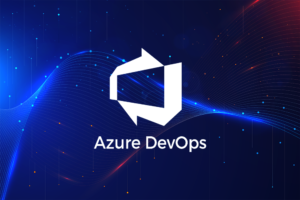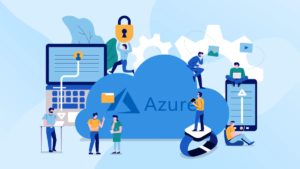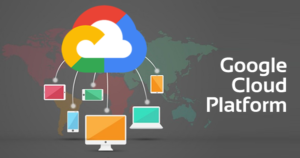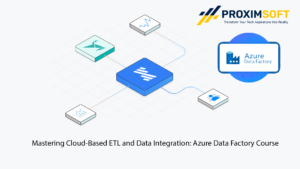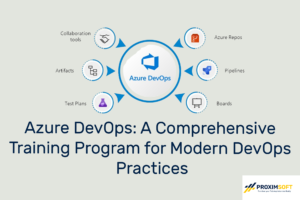MS Azure BI: A Comprehensive Training Program
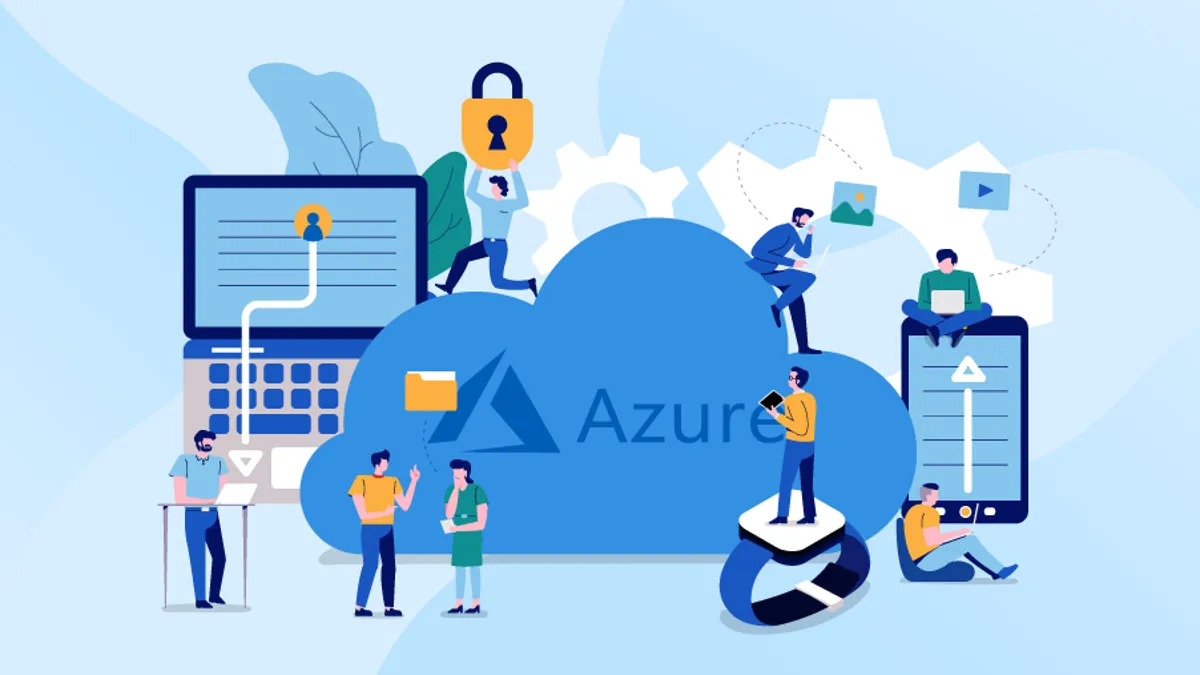
Welcome to Proximsoft’s MS Azure BI Training, your gateway to mastering Microsoft Azure’s Business Intelligence services and propelling your career into the world of data analytics and reporting. Our expertly crafted course is designed to equip you with in-depth knowledge and hands-on experience, ensuring you can confidently navigate the vast landscape of Azure’s BI capabilities.
In this course, you’ll delve into Azure’s Business Intelligence offerings, exploring powerful tools like Power BI, Azure Stream Analytics, Azure Analysis Services, and more. From understanding data storage solutions to building real-time analytics pipelines, you’ll gain practical exposure through hands-on projects, preparing you for success in the dynamic field of business intelligence.
Why Learn MS Azure BI?
- The demand for professionals with Azure BI expertise is soaring, opening up diverse and lucrative career opportunities in the data-driven industry.
- Azure BI seamlessly integrates with various data sources, offering a unified platform for efficient data processing, analysis, and reporting.
- Unlock real-time insights into your business with Azure Stream Analytics, a serverless analytics service designed for mission-critical workloads.
- Scale your data analytics needs effortlessly with Azure Synapse Analytics, combining enterprise data warehousing and Big Data analytics.
- Leverage the power of Azure Data Factory for code-free ETL processes, connecting data silos and streamlining data integration across diverse sources.
| Mode of Training | Online live Interactive sessions |
| Duration of the Training | 6 weeks |
| Training duration per day | 60 – 90 min session |
| Software Access | Software will be installed/server access will be provided, whichever is possible |
| Training Materials | Soft copy of the material will be provided during the training |
| Training fee | Depends on the Requirement |
| Resume Preparation | Yes, at the end of the course based on the JD |
| Interview Preparation | Yes, by sharing some FAQ’s |
| Mock calls | Yes, 2 Technical Mock calls |
| Internship Project | Yes |
| Certification | Yes, at the end of the training |
| JOB Assistance | Yes |
| JOB Support | Yes |
| Weekdays | 6AM -2 PM EST & 6-11:30 PM EST (student can pick any 1 hr) |
| Weekends | 8 AM – 12 PM EST (student can pick any 2 hrs) |
What I will learn?
- Introduction to Microsoft Azure and its Services
- Cloud Computing Basics and Advantages
- Azure Storage Solutions and Management
- Azure SQL Databases and Data Warehousing
- Azure Data Factory: ETL Processes and Pipelines
- Azure Databricks: Apache Spark-based Analytics
- Azure Stream Analytics: Real-time Data Insights
- Azure Analysis Services: Creating and Deploying Models
- Power BI Integration and Visualization
Course Content
- INTRODUCTION TO MICROSOFT AZURE
- What is On Premise Data Centre
- Challenges of Maintaining Storage and
- Server On Premises
- Data Centre
- Data Centre Managed Services
- Virtualization
- Cloud Computing
- Advantages Of Moving Storage and Servers to Cloud
- Services Offering By Microsoft
- IAAS(Infra Structure As A Service)
- PAAS(Platform As A Service)
- SSAS(Software As A Service)
- Microsoft Azure vs AWS
- Creating Azure Account
- All Services of Azure
- What is Subscription
- What is Resource Group
- Creating Virtual Machines(VM’s) with Windows and Unix Operating System
- Executing few Unix Commands with Putty
- What is Resource
- Types Of Storage Accounts
- StorageV2 (general purpose v2)
- Storage (general purpose v1)
- BlobStorage
- What is Container?
- Types of Storages
- Blobs
- Data Lake Gen2
- Files
- Disks
- Queues
- Tables
- What is Azure SQL
- Different deployments of SQL in Azure
- Creating Database along with Azure SQL Server
- Creating Another Database within the Existed Azure SQL Server
- Creating Tables and Feeding data in Azure
- Handling SQL/T-SQL with the following
- Client Tools
- Azure Client in Azure
- SQL Server Management Studio
- Azure Data Studio
- SQL Server Data Tools
- Migration of existed On Premise to Azure
- What is Warehouse
- What is Azure Data Warehouse
- Differences between Traditional Warehouseand Azure Data Warehouse
- Differences between SQL Server Database & Azure Data Warehouse
- Creating Azure Data Warehouse
- Querying Data from Azure Data Warehouse
- Creating Master Key
- Creating Scoped Credential
- Creating External Data Source
- Creating External File Format
- Creating External Table
- Querying Data from Azure Data Warehouse
- Introduction
- Azure Data Factory vs SQL Server
- Integration Services
- Components Of Azure Data Factory
- Linked Services
- Data Sets
- Transformations
- Pipelines
- Activities
- Copy Data
- Creating Linked Services
- Creating Datasets
- Creating Pipeline with Copy Activity
- Running Pipeline
- Monitoring Pipeline
- Moving data from Blob to Azure SQL Server
- Moving data from SQL Server to Blob
- Configure different Types Of Integration Runtimes
- Azure Integration runtime
- Azure Self Hosted Integration Runtime
- SSIS Integration runtime
- Moving Data from Blob to On Premise SQL Server
- Moving Data from Blob to On Premise SQL Server
- Debugging and Monitoring Pipelines
- Web Activity
- Dataflow Activity transformations
- Source
- Sink
- Filter
- Select
- Conditional Split
- Derived Column
- Join
- Lookup
- Union
- Aggregate
- General Activities
- Stored procedure
- Moving data from Blob to Azure SQL Server
- Maintaining Metadata(Logging)
- Error handling and Logging error records
- Lookup
- Incremental Loading
- To get Configuration
- Get Metadata
- Set Variable
- Execute Pipeline
- Execute SSIS Package
- Delete
- Wait
- Iteration & Conditionals
- For Each
- If Condition
- Until
- Filter
- Version Control and Code Repository in Git Hub
- Deployment
- Azure Data Lake
- What is Data Lake
- Storing Data into Azure Data Lake Store
- Querying Data from Azure Data Lake Store to SQL Server
- Introduction to Azure Data Lake U-SQL
- Batch Job
- Data Lake Analytics
- Azure HD-insight
- U-SQL
- Basics Of Data bricks
- Basics Of Power BI with Azure
- Creating and modifying applications and modules and other related activities
- Limiting access of Applications and modules to specific set of roles
- Incident Management
- Problem Management
- Change Management and it’s workflows
- Service Level Management
- Different types of change requests and their significance
- Change Types and Respective workflows
- Risk Assessment Plugin activation
- Risk Questionnaires configuration and defining thresholds and conditions
- SLA definitions and triggering conditions
- SLA schedules
- Retroactive start usage in SLA
- SLA workflow and Notifications on breach
- Introduction to Items and Categories
- Introduction to Variables and Variable Sets.
- Creating workflows
- Associating workflows to Items
- Email notification creation(when to trigger, whom to trigger, What content to send)
- Templates utilization in email notification
- Events creation
- Email notification through events
- Email notification in workflow via notification and events
- Send to event creator usage
- Debugging mail sending issues
- Data load through excel
- Transform Mapping(Auto and Manual mapping)
- Scheduled Imports
- CMDB purpose in incident & problem & change request
- Data load using import sets into CMDB
- Different ways how data come into CMDB(importsets,discovery,3rd
- party CMDB integration)
- Discovery purpose
- Help the helpdesk in ServiceNow
- How to enable Discovery in Snow
- Client Scripts (Intro, How to write and use)
- UI Policy (Intro, How to write and use)
- UI Scripts
- UI Page
- UI Macros
- Server Side scripting
- UI Actions (Intro, How to write and use)
- Business Rules and Global Business Rules (Intro, How to write and use)
- Script Include
- Background Scripts
- Introduction to update set
- Creating an update set
- Using an update set
- Creating update source
- Retrieving update sets
- Moving changes between instances
- Advantages and best practices
- Creating Quick reports from lists
- Creating Reports, Gauges and Homepages
- Various types of reports and usage
- Scheduling reports
- LDAP Integration
- SSO Integration
- Discovery Integration
- MID service Integration
- SAP Integration with ServiceNow
- ServiceWatch integration with ServiceNow
- Widget
- Page
- New Portal
Requirements
- Basic understanding of data processing concepts.
- Familiarity with SQL and T-SQL.
- Experience with client tools like SQL Server Management Studio and Azure Data Studio.
- Comfortable working with Azure services and subscriptions.

